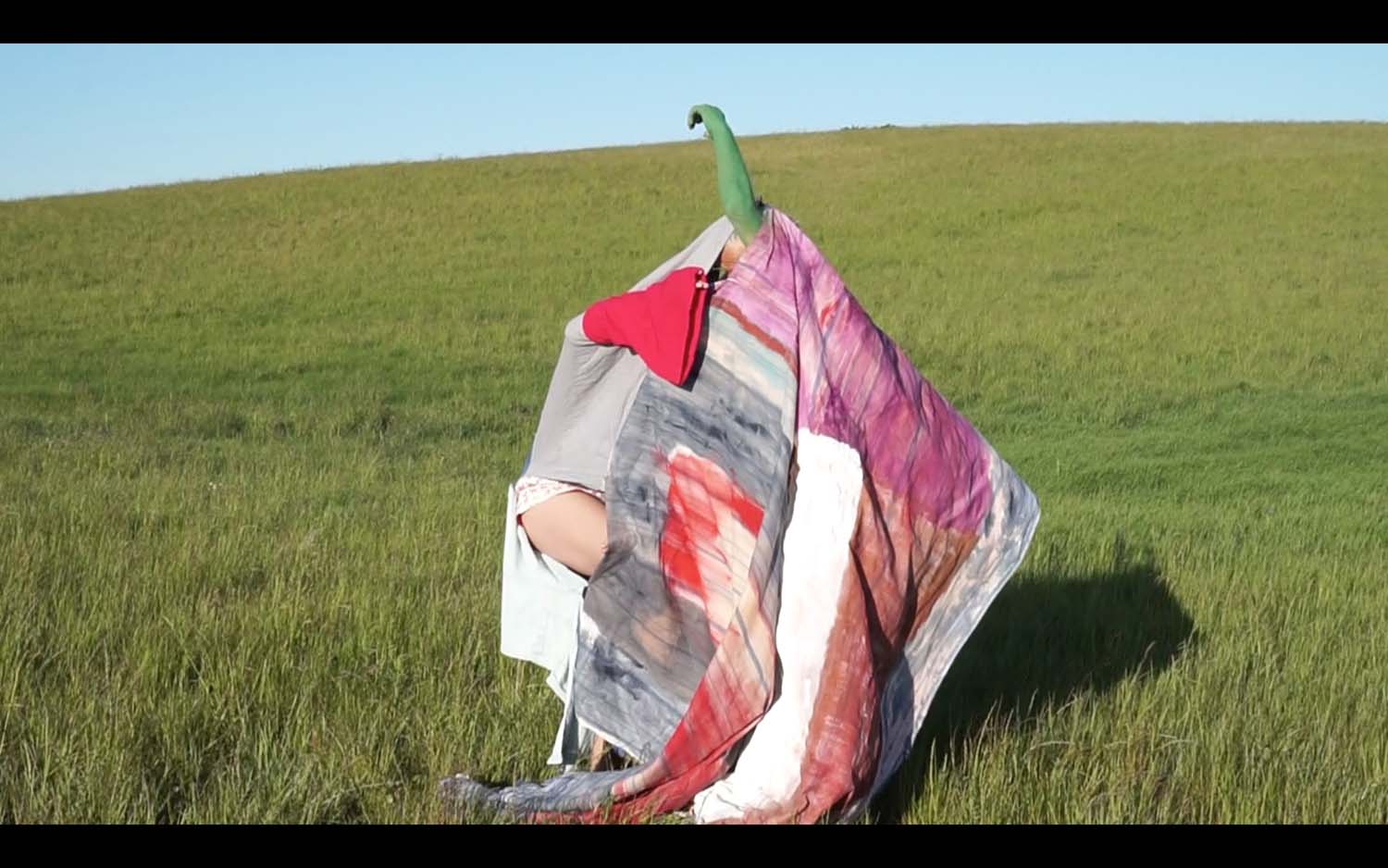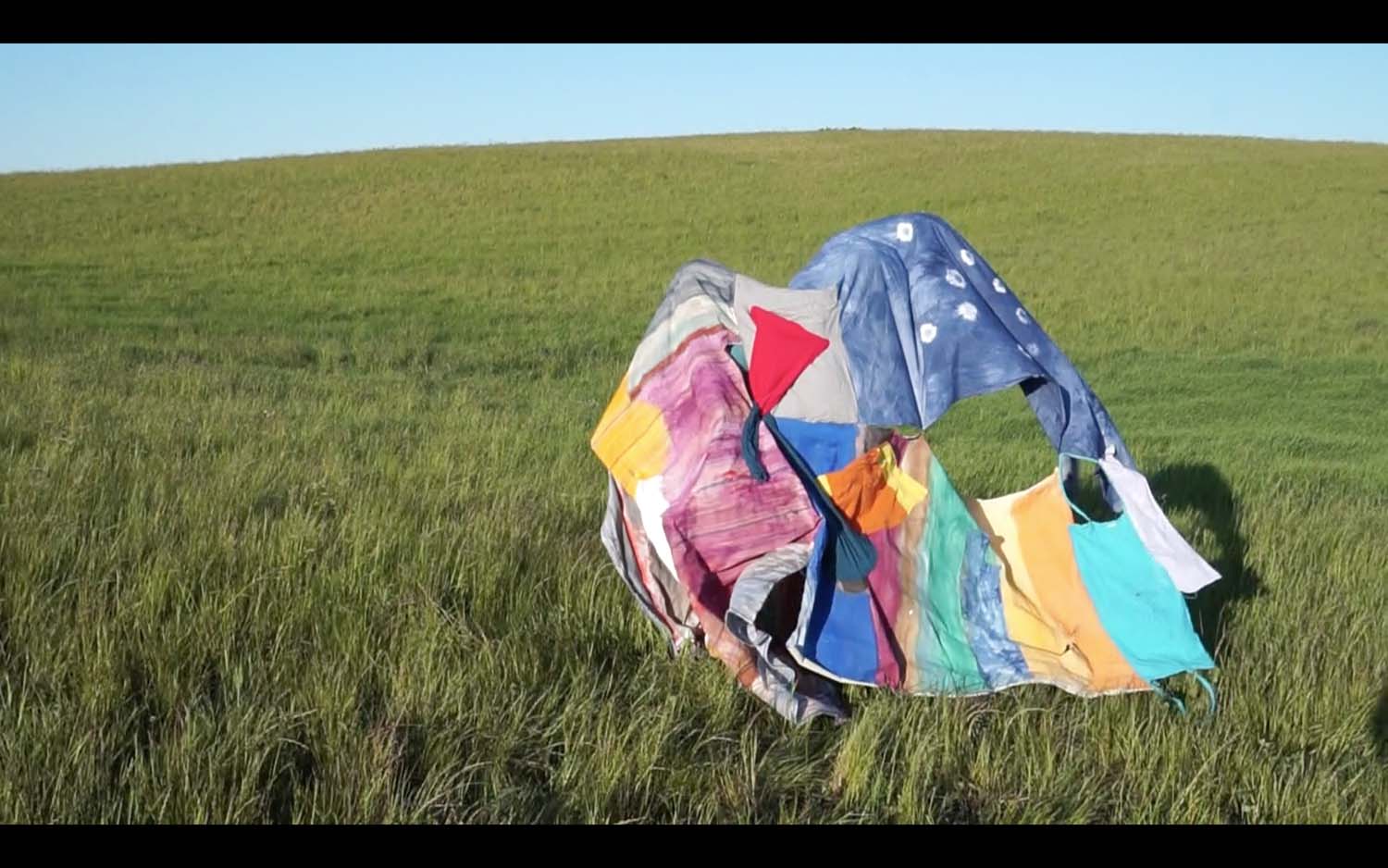SILKE KAESTNER
Costume as Painted Collective Skin
ABSTRACT
Imagine a space we share with others.
Let’s suck the air out of the space,
walls become a flexible envelope,
which cover the inhabitants, the content appears as an abstraction of material and
body fragments.
This combination irritates when we can not figure out the boarders of the solid person.
In my costume I approach the autonomous movement of parts of the body which are not longer locatable to an individual but affects the movement of the fabric body where parts of the body might penetrate through the surface from inside.
The shell is a painted surface a kind of mobile painting. It covers an accumulation of energy developed by individuals which are captured in one and the same skin which they can not leave at any time.
Colour and material sets my mind free. Stimulated by the material I fellow my intuition I make visible a sentiment, an experience, vision. I gathered left overs, sheets and textiles, worn clothes and a glove, paint on them and paint with them using their own strong colours. I stitched the textiles together by hand.
This material I offer to play with, it is an open situation and a precisely defined setting. I observe the encounter of the material and body, the metamorphosis of an hybrid architecture in an abstract way comparable to the process of painting. colours and shapes are changing . It is the heterogeneous contrast of the Collage, which transport the tension of the contradiction and integration of the unknown in the same way. Colouring the leg and the arm of the performers let the body become even more a part of the 3-dimensional collage.
BIOGRAPHY
Silke Eva Kästner is a painter who lives in Berlin. She developed her mobile and performative approach while travelling to New York, Japan and India. The ephemeral, unpretentious quality of her materials makes them suitable for playful exchanges and improvisations with an active spectator, her painterly acts initiate a dialogue with accidental partners. In these carefully prepared moments, when spectators meet the material, the formal shape of the art piece transforms.
Besides her art practice she works in interdisciplinary collaborations, such as with dancers, scientists, philosophers, and she initiates inter-cultural projects such as Kashmir. Point.Charlie, a long-term exchange project with artists from Kashmir since 2010.
General Credits for both pics:
Color Field Painting, 5/2020 , Silke Eva Kästner. Concept , material design , camera, Silke Eva Kästner. Performer. Frauke Frötschl , Klaus Kunckel. Editing: Lisa Hofmann, Böckenberg 2020



